Key message: The trend of the forest bird species is stable with a slight increase and a slight decrease of population in the meadow species
Assessment: The indicator shows trend of changes in the population abundance of selected bird species from forest and meadow habitats. The change in the population of birds explains the loss, and change in the structure of their habitats, due to fragmentation and isolation, as well as other changes in the environment that directly or indirectly affect the change in population structure. In the period from 2008 to 2013, trend in population dynamics of birds registered in meadow habitats was more or less stable, what was even more evident in forest habitats.
Different patterns of the dynamics of bird populations indicate significant changes in forest and meadow ecosystems that specifically affect different species. The explanation for the increase in the number of forest habitat types is probably due to the increase in areas under forest and shrub vegetation, but may also be due to changes in the wider environment. However, in the forest habitats there is a significant, even number of species whose number is decreasing, which is probably due to the decrease in the quality of forest habitats (these are species specialized for life in old forests). Although large number of species of meadow habitats show a downward trend, there is an increased number of species with a stable population. Improving the conditions in agricultural areas, as well as reducing the intensity of agriculture due to depopulation of the villages are the likely reasons for such a trend. Among the forest species, there are more species with stable population, while the increase in populations of some species is obvious (e.g. Dryocopus martius). However, species with a markedly negative trend (e.g. Accipiter gentilis) are noticeable. Among the meadow species, the most pronounced negative trend was observed in the Perdix perdix, Oenanthe oenanthe and Streptopelia turtur.
Picture 1: Total trend of populations of forest and meadow bird species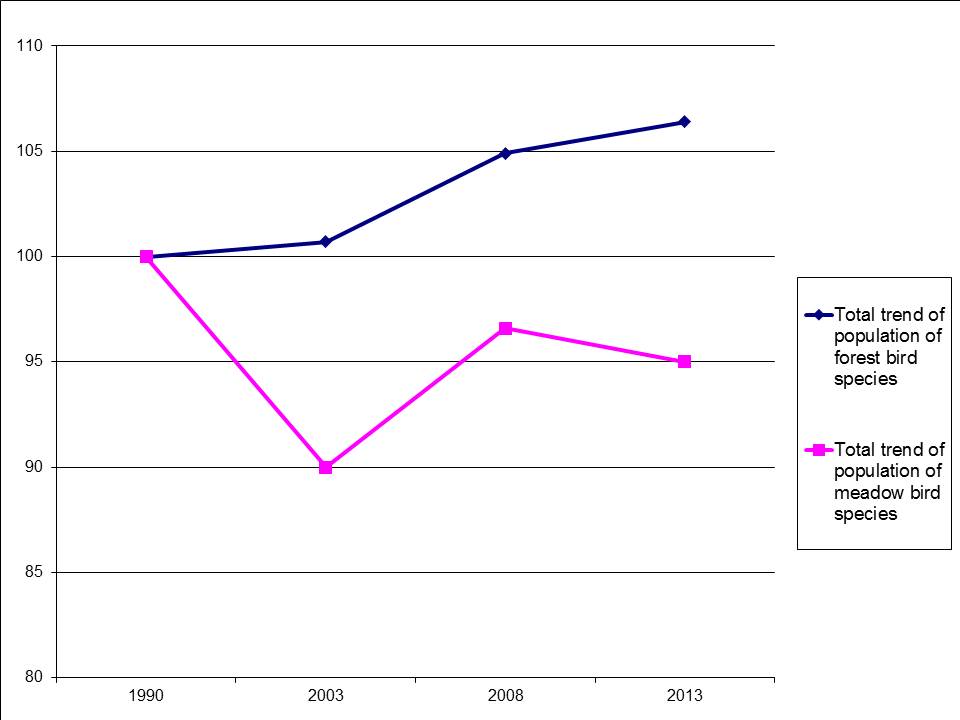
Picture 2: Trend of forestland birds population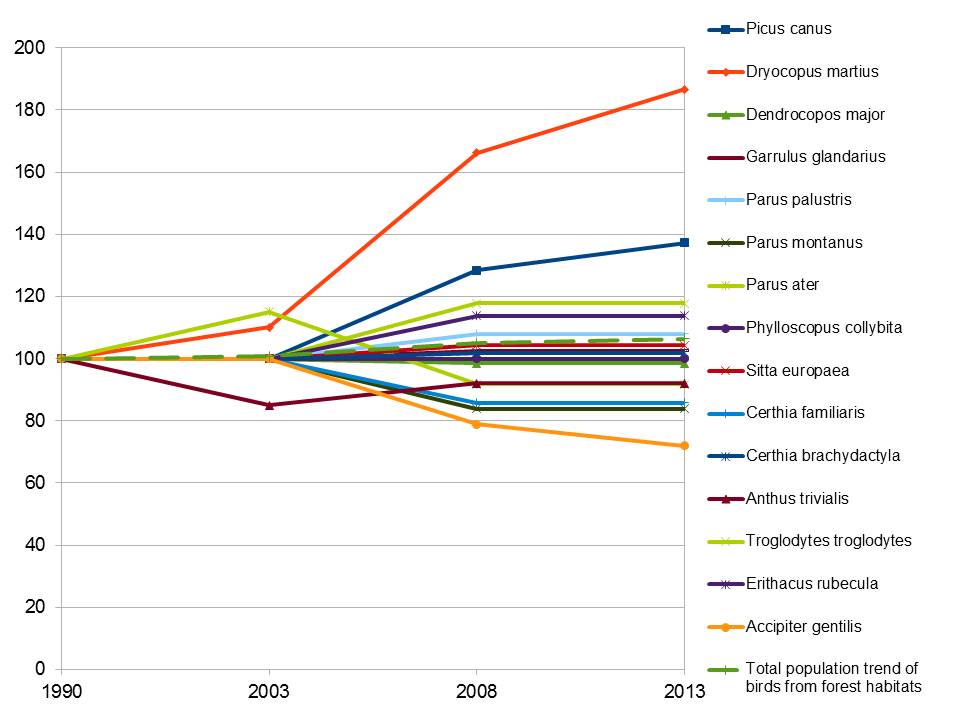
Picture 3: Trend of meadow birds population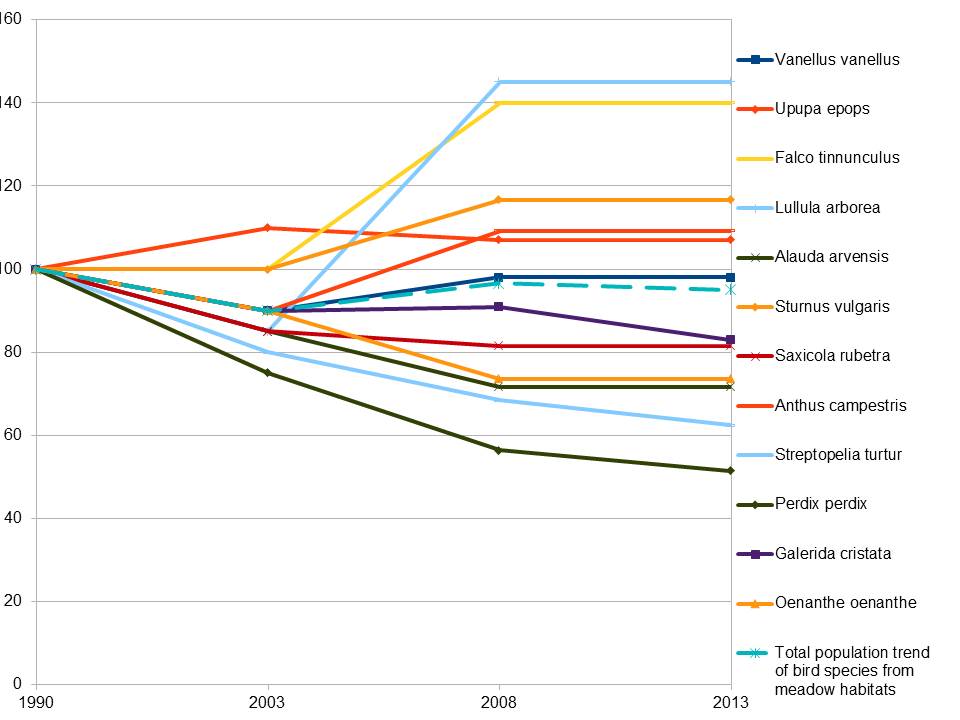
Indicator Name: Species diversity-birds population trend
Institution/Author: Environmental Protection Agency/Slaviša Popović, Society for the Study and Protection of Birds/Dr Dimitrije Radišić
Use and interpretation:
The indicator shows the trend of changes in the population abundance of selected bird species from forest and meadow habitats. The change in the population of birds explains the loss, and change in the structure of their habitats, due to fragmentation and isolation, as well as other changes in the environment that directly or indirectly affect the change in population structure.
Key question(s) which indicator helps to answer
The indicator helps to answer the question: What is the trend in population growth of selected species in two habitats: forest and meadow?
Use of indicator
The indicator is used to monitor the population growth of selected bird species. Bird monitoring started in 1990 and covers two periods: 1990-2002 and 2000-2013 in two habitat types: meadows and forests. During the monitoring period, decline in population growth, stable population growth and increase in population growth were observed in different period. Most of the time, bird species from meadow habitats had stable population growth. Meadow bird populations were mostly stable and slightly decreased in numbers. In 2000-2013 forest habitat bird populations were more stable and numerous, compared to the period 1990-2002, while population growth rate of 4 species increased slightly and growth rate of one species increased considerably. There were no species that were reduced in numbers.
Scale of appropriate use
Number of population of selected bird species and population growth through the time and by habitats. Changes of the most important types of habits, according to CORINE Land Cover and EUNIS.
Potential for aggregation:
Meaning of upward or downward trends (“good or bad”)
The periodicity of data collection: Institute for Nature Conservation of Serbia, Bird Protection and Study Society of Serbia collect and analyse data. There are two periods when different changes were recorded that have been generated inside and outside population of monitored bird species. The indicator also relates to trend in changing of the most important types of habitats according to CORINE Land Cover and EUNIS, which means dynamics of changes in the area of forest, meadows, mixed and other types of habitats.
Possible reasons for upward or downward trends:
The indicator is determined annually, and it is important for monitoring population growth of selected bird species in two habitat types: meadows and forests.
Implications for biodiversity management of change in the indicator:
The indicator is traditionally described in the annual state of the environment reports in Serbia, and it is determined as biodiversity indicator, according to the Rulebook on the National list of environmental protection indicators (Official Gazette of the Republic of Serbia No. 37/2011).
Units in which it is expressed:
The number of individuals per unit area. Number of breeding pairs. Surface expressed in hectares (ha).
Description of source data:
Institute for nature conservation of the Republic of Serbia
Institute for the nature conservation of the Vojvodina Provence
Bird Protection and Study Society of Serbia
Calculation procedure:
Trend in changes of population abundance of selected species of birds according to the expert and administrative lists and methodology of counting and assessment developed by the European Agency for Environmental Protection. Dynamic of habitat changing of habitats according to EUNIS classification and / or the CORINE Land Cover methodology.
Most effective forms of presentation:
(graph types, maps, narratives, etc.-give examples where possible):
The best ways to present this indicator are tables and graphs and they provide opportunity to monitor progress regarding this indicator and to record trends observed.
Limits to usefulness and accuracy:
Access to data, slow data exchange and update
Updating the indicator:
Annually.
Closely related indicators
Diversity of species-butterfly population trend
Additional information and comments
Table 1: population trend of birds from forest habitats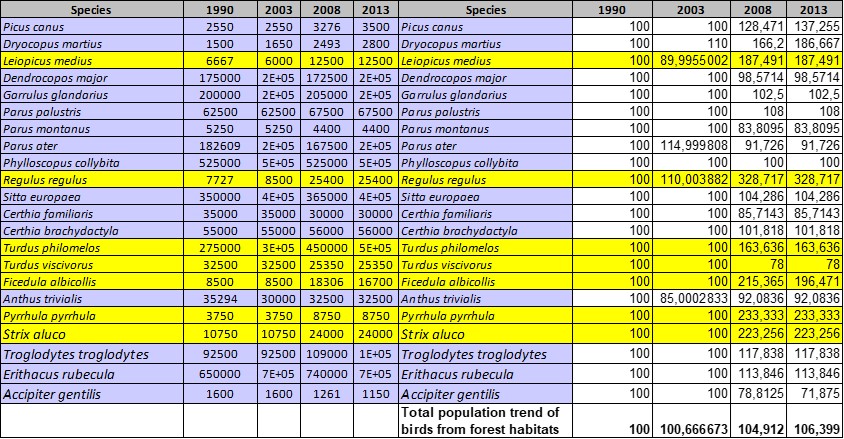
Table 2: population trend of birds from meadow habitats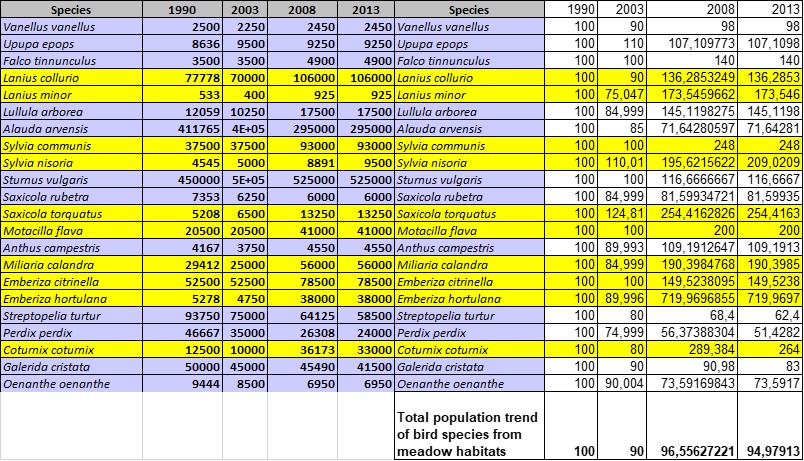
Table 3: total trend of populations of forest and meadow bird species
Serbia